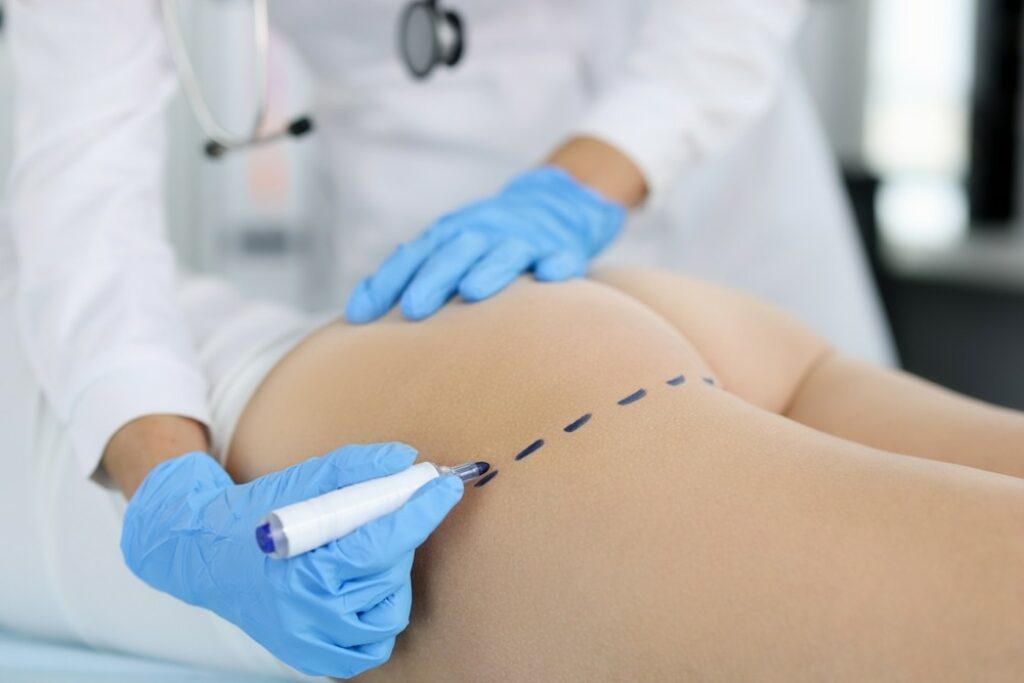
Costs, Benefits and Recovery from Buttock Augmentation Treatments
There is no denying the fact that nobody has a perfectly symmetrical body. But for some individuals, the size and / or shape difference in certain areas are quite noticeable, and this can weigh down on their self – esteem and confidence. Fortunately however, there is a treatment called buttock augmentation.
Related Topics (Sponsored Ads):
Buttock augmentation has gained immense popularity in recent years, as more individuals aspire to achieve a fuller, more enhanced and better shaped backside. It involves various techniques, including fat transfer (also known as Brazilian Butt Lift), silicone implants, or a combination of both. However, it is no minor endeavor and comes with some hassle and potential risks, so it’s important to consider all of this carefully before making a final decision.
Despite this, people have been flocking towards this treatment, especially women, due to its attractive benefits. After all, who wouldn’t want to look more glamorous and flattering in their jeans or skirt? Thanks to this almost magical procedure, both men and women can finally walk and flaunt their buttocks with confidence. But there is more to this procedure than it seems, and it should never be stepped into lightly.
This article will provide you with a well-rounded understanding of buttock augmentation treatments, along with the costs involved, potential benefits and risks, the recovery process, and the suitability of the treatment for different individuals.

Costs of Buttock Augmentation
The cost of buttock augmentation treatments greatly vary, depending on the following factors:
~ Geographic location
~ Surgeon’s experience and reputation
~ Type of procedure (fat transfer or implants)
~ Additional procedures performed (e.g., liposuction)
~ Facility fees and anesthesia costs
One common method is the Brazilian Butt Lift (BBL), which involves fat transfer from other parts of the body to the buttocks. On average, the cost of a BBL procedure ranges from $4,000 to $15,000, taking into account factors such as the surgeon’s expertise, location, and additional fees for anesthesia and facility charges.
Alternatively, buttock implants, another popular augmentation method, can cost anywhere between $4,000 and $10,000. It is crucial to consider the long-term costs, including potential revision surgeries and follow-up appointments, when budgeting for buttock augmentation. It is also worth underlining that health insurance usually does not cover buttock augmentation treatment, unless it’s being caused by a cancerous tumor or some other disease.
Benefits and Risks
The benefits of buttock augmentation treatments go beyond just enhancing the appearance of the buttocks. For individuals who desire a fuller and more proportionate figure, buttock augmentation can provide a significant boost to their self-confidence and body image. It can also help clothing fit better and improve overall body proportions.
However, it is important to consider the potential risks associated with these procedures as well, as it does not always go well. Complications can include infection, scarring, asymmetry, implant rupture, and fat necrosis, which can ironically make the issue even worse than it was before. Therefore, it is absolutely essential to choose a reputable and experienced plastic surgeon to minimize the risks and ensure a successful outcome.
Recovery Process
The recovery process for this treatment varies, depending on the chosen method. Following a BBL, patients may experience swelling and discomfort in the buttocks and donor sites. A compression garment should be worn for several weeks to aid in healing and reduce swelling. Patients typically need to avoid sitting or lying directly on their buttocks for a few weeks to ensure the survival of the transferred fat cells.
For buttock implant procedures, the recovery period is slightly longer. Patients can expect discomfort, swelling, and bruising, which can be managed with pain medication. It is crucial to follow the surgeon’s post-operative instructions, including restrictions on physical activities and proper wound care.
The entire recovery process for buttock augmentation can take several weeks to months. Initial healing typically occurs within the first 1-2 weeks, but it is crucial to follow the surgeon’s post-operative instructions for optimal results. He / she will most likely recommend that you avoid sitting or lying directly on the buttocks, limit physical activity and strenuous exercise, follow a balanced diet and stay well hydrated.
Suitability
Buttock augmentation treatments are not suitable for everyone. Overall, candidates need to be in good overall health and have realistic expectations about the results. It is important to first consult with a board-certified plastic surgeon to determine if buttock augmentation is appropriate for individual circumstances. The surgeon will consider factors such as body type, available fat for transfer, skin elasticity, and desired outcomes.
Final Thoughts
As with any treatment / procedure, it is crucial to prioritize safety and choose a reputable plastic surgeon. As mentioned previously, it is also essential to be aware of the potential risks and carefully follow the post-operative instructions for a successful recovery.
Ultimately, the decision to undergo buttock augmentation is personal and should be made after thorough research and consultation with qualified professionals, who will assess the psychological and emotional readiness of individuals considering this procedure. Realistic expectations, stable mental health, and a thorough understanding of the procedure are essential for the most desirable outcome.




